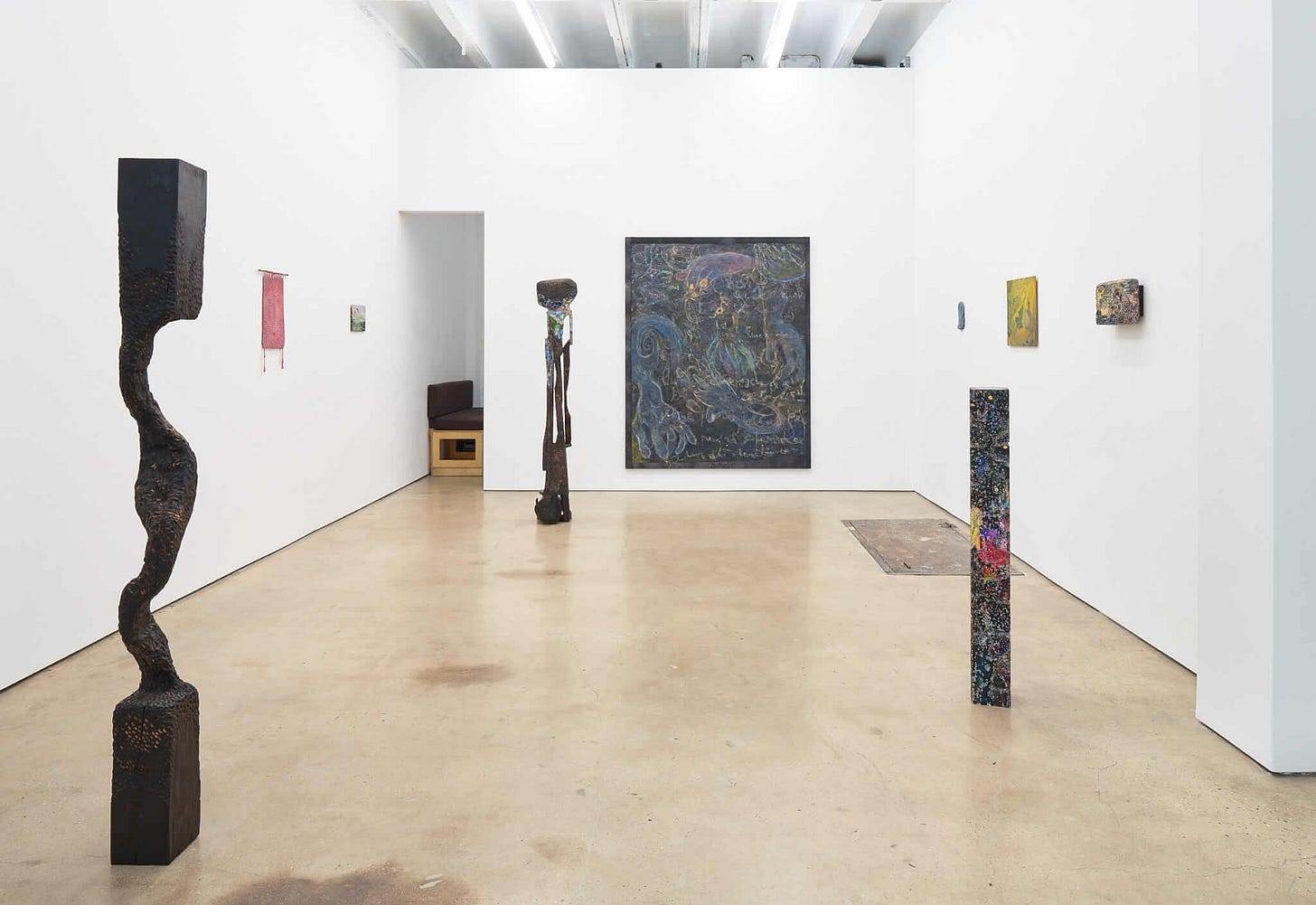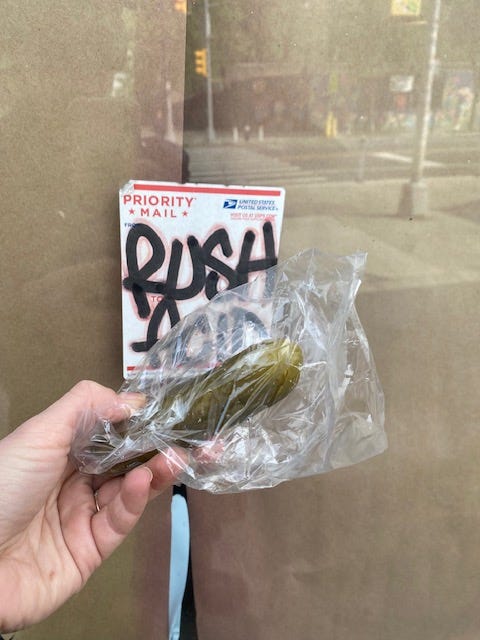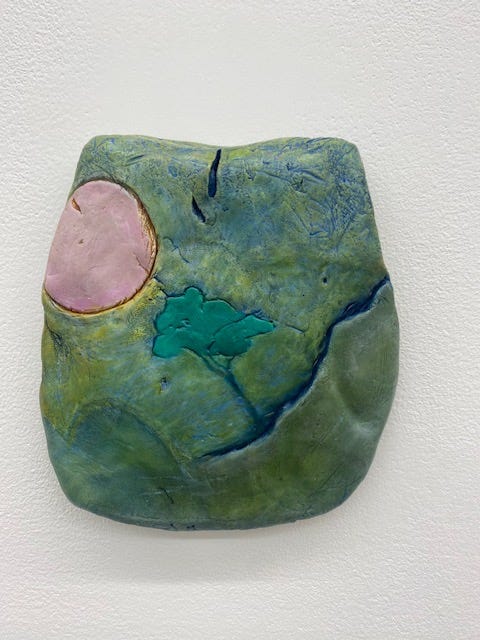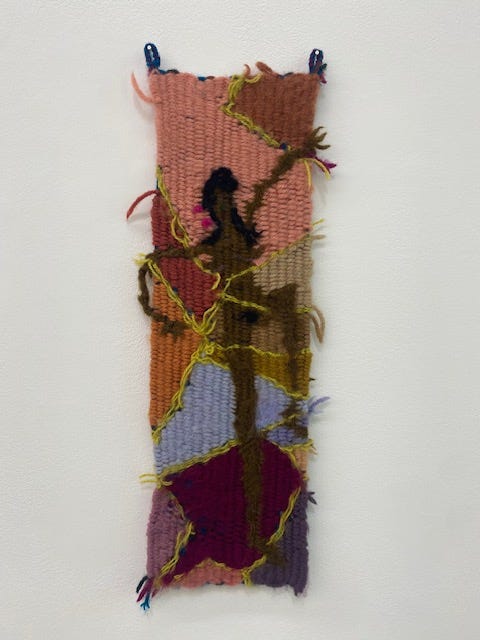Art and Pickles I Saw: Monday Edition
Thanks to my summer schedule, my writing availability has now opened
This week, expect a one-paragraph or so review of art I’ve seen over the last week—I’m aiming for every single day but we’ll see. Whether it’s good, bad, or confusing, this is what’s up.
Today I’m giving y’all my take on the Pickle Guys and François Ghebaly, both on Grand Street.
357 Grand Street
New York, NY 10002
Background: Not only did I stop off at Pickle Guys because I enjoy pickles, but I also needed to do some taste research because I’m learning how to make my own homemade pickles. My review: the price was right—one dollar for one pickle—but the vinegar was excessive and there was barely a crisp to these rubbery pickles.
Anderson Borba and Gokula Stoffel
Thinking Hands
April 30 – June 6, 2024
François Ghebaly
391 Grand Street
New York, NY 10002
Thinking Hands looks like what would happen if mid-century organicism were in a shipwreck that crashed off the coast of an uninhabited island; imagine Barbara Hepworth or Henry Moore making sculptures using castoff materials, including the tools and paint found in the debris floating offshore. Also, Paul Klee was invited and so was Alberto Giacometti.
The two-person exhibition brings together works that transform found and ordinary materials, like wood, cardboard, and wool, through handmade techniques. It’s unclear which of the artists’ materials are found or repurposed and which aren’t. According to the gallery press release, Borba uses “locally-sourced woods and materials” and Stoffel “incorporates fabrics she received as a gift.” I’m such a cynic when it comes to any sense of eco-speak, though: What about the paint? Is the paint locally sourced? Are these fabric gifts from baronesses or birds?

Borba’s The Figure With Colorful Skin (2024), like the the artist’s two other freestanding sculptures, Standing Son (2024) and Laptower (2024), are covered in small, dotted impressions, as if they were gouged into with a whittling tool, eaten away at by termites, or pecked at by a horde of woodpeckers. There’s no clear line between which techniques were made by the artist, and which ones are made by other forces. Stoffel’s works are less ambiguous regarding the line between art and so-called nature, given her ornamental, though relational, approach to materials. One of the more charming works by Stoffel, End of the Line (2024) consists of a blue-green landscape painted on a paperback-sized porcelain slab. There’s a simple feedback between representation and the underlying material, with the veins of the porcelain informing the placement of a tree and the winding route of a river.
Among the artist’s fabric works, though, Cat’s Cradle (2024) was one of the more confusing. The woolen wall-hanging features a central figure that appears stuck inside the weave, trapped under a cat’s cradle. I’m just not sure about the choice of representation here of a nude, dark-skinned woman with pubic hair. (Someone please explain this to me because I just don’t know how to talk about this work. Is it funny? Is this a friend of hers? What.Is.The.Deal?) Stoffel’s paintings were somewhat underwhelming, if only because they seemed a little too direct in their organic—and surrealist—influences. Regardless, I appreciated their overall rhythms and the looping forms that danced across their surfaces.
Overall, Borba and Stoffel’s works share in the difficulty of determining the difference between the manufactured and handmade; the human-made and other-than-human-made; and, due to the 20th-century influences, the difficulty of knowing with which temporal state we find ourselves in with full certainty. It’s another type of shipwreck, where the past crashes into the present, humans crash into termites, and so on and so forth as we all ebb along.
Thanks for putting up with the typos!





